Toulon
Type of resources
Available actions
Topics
INSPIRE themes
Keywords
Contact for the resource
Provided by
Years
Formats
Representation types
Update frequencies
status
Scale
Resolution
-
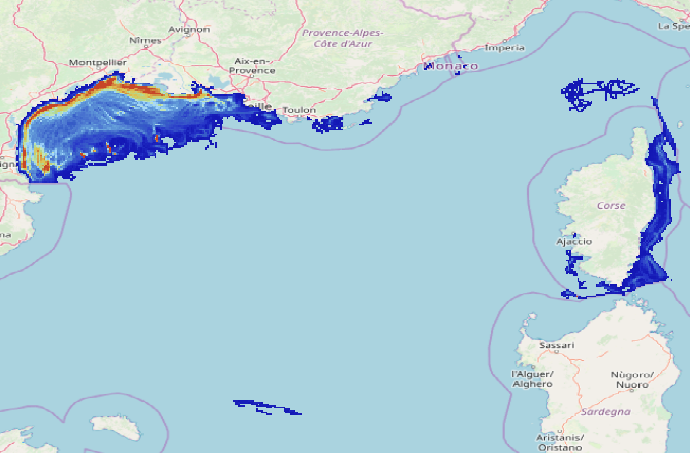
Data on physical impact intensity caused by trawling (bottom otter trawl, twin bottom otter trawl, dredges) estimated from VMS (Vessel Monitoring System) data cross-referenced with the Community Fishing Fleet Register and, for French vessels, with the landing data between 2008 and 2020. The data is constituted of 14 rasters in a resolution of 1’x1’ (13 annual abrasion rasters between 2008 and 2020 and 1 raster representing the 90th percentile of inter-annual abrasion). The abrasion is expressed in swept area ratio per year for each layer. This work enabled the study of the trawling impact on benthic communities in the Gulf of Lions and Corsica. The objective was to better describe the spatial and temporal repartition of trawling in this area and its potential impact on benthic habitats.
-
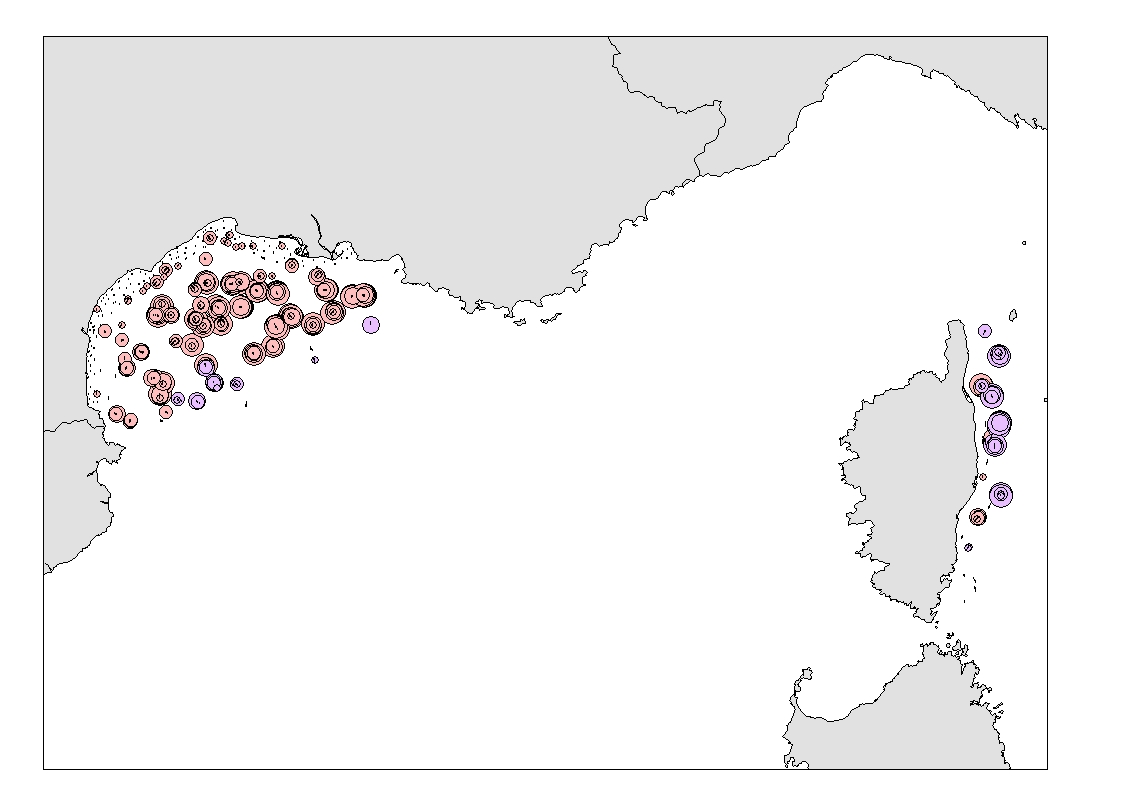
Density (number per km²) and biomass (g per km²) of Funiculina quadrangularis (Pennatulacea) and Isidella elongata (Alcyonacea) observed in bottom trawl scientific surveys (French MEDITS and NOURMED) by-catches from 2012 to 2019
-
In the Mediterranean deep-sea two scleractinian species, Lophelia pertusa (= Desmophyllum pertusum) and Madrepora oculata, make up the dominant structure-forming corals. The Lacaze-Duthiers canyon is the only French Mediterranean canyon where the two species L. pertusa and M. oculata have been observed living together in large quantities, the situation generally described for the biocoenosis of cold-water corals (CWC). In this canyon large colonies (more than 40 cm) of both species of scleractinians were observed at depths ranging from 246 m to 541 m at the head of the canyon and its western flank. The second canyon is the Cassidaigne canyon, where M. oculata seems to be the only structure-forming scleractinian there. The largest concentration of M. oculata colonies was observed on the west flank of the canyon along a crest at depths ranging from 200 to 210 m. Mature M. oculata colonies attained heights up to 40 cm. M. oculata were observed in three other canyons: Bourcart, Sicié and Var. In the Bourcart canyon, M. oculata was observed on a shelf of hard substratum at 331 m depth. Several single branches protruded from a slab. In the Sicié canyon a 15-cm colony of M. oculata was observed at 255 m depth, while in the Var canyon, three young branches 2 cm long were seen growing at 350 m depth on a wall of hard rock. Data linked to the publication Fabri et al, 2014. https://doi.org/10.1016/j.dsr2.2013.06.016.
-
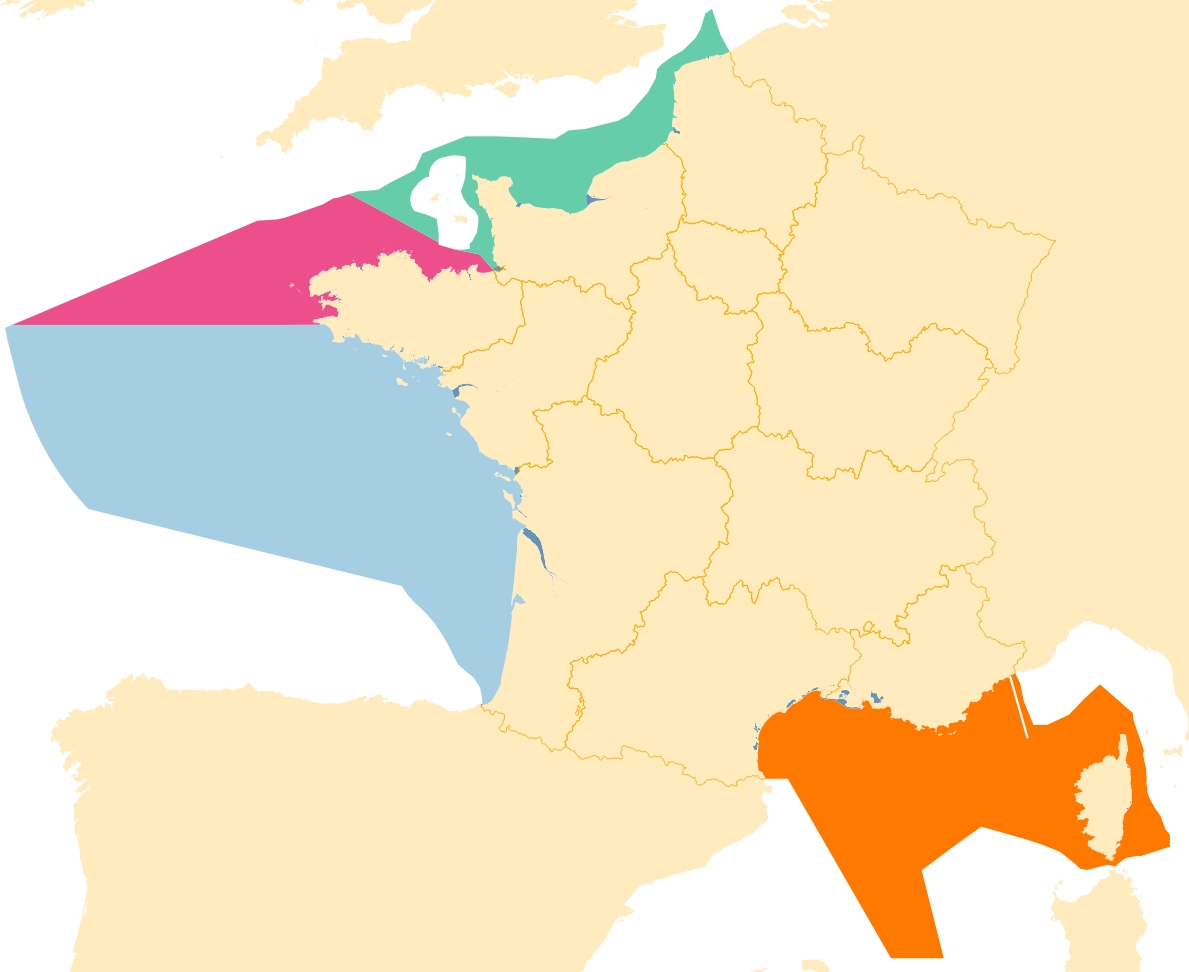
French marine's subregions: areas used under the Framework Directive strategy for the marine environment.
-
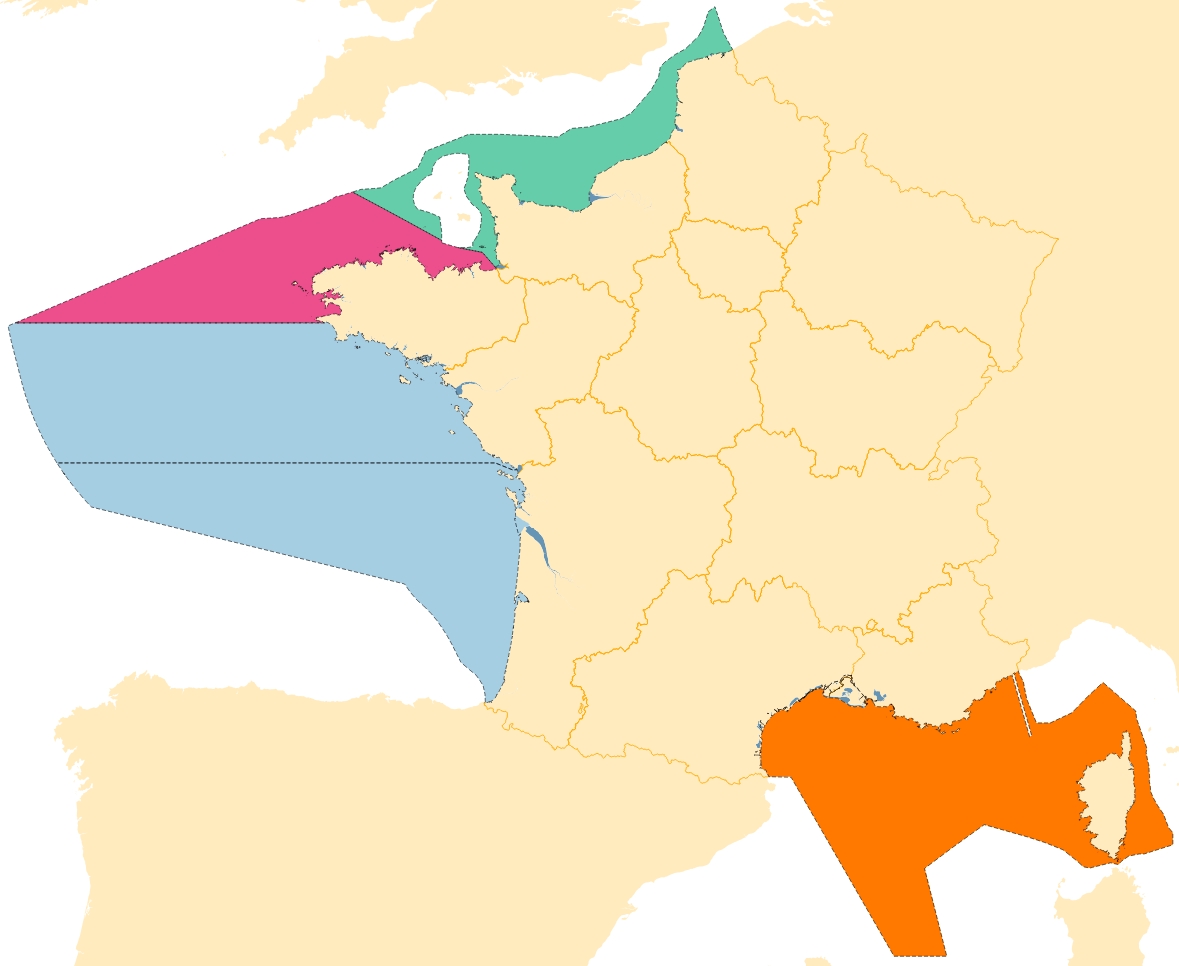
French Marine Reports unit of european marine's subregions: areas used under the Framework Directive strategy for the marine environment.
-
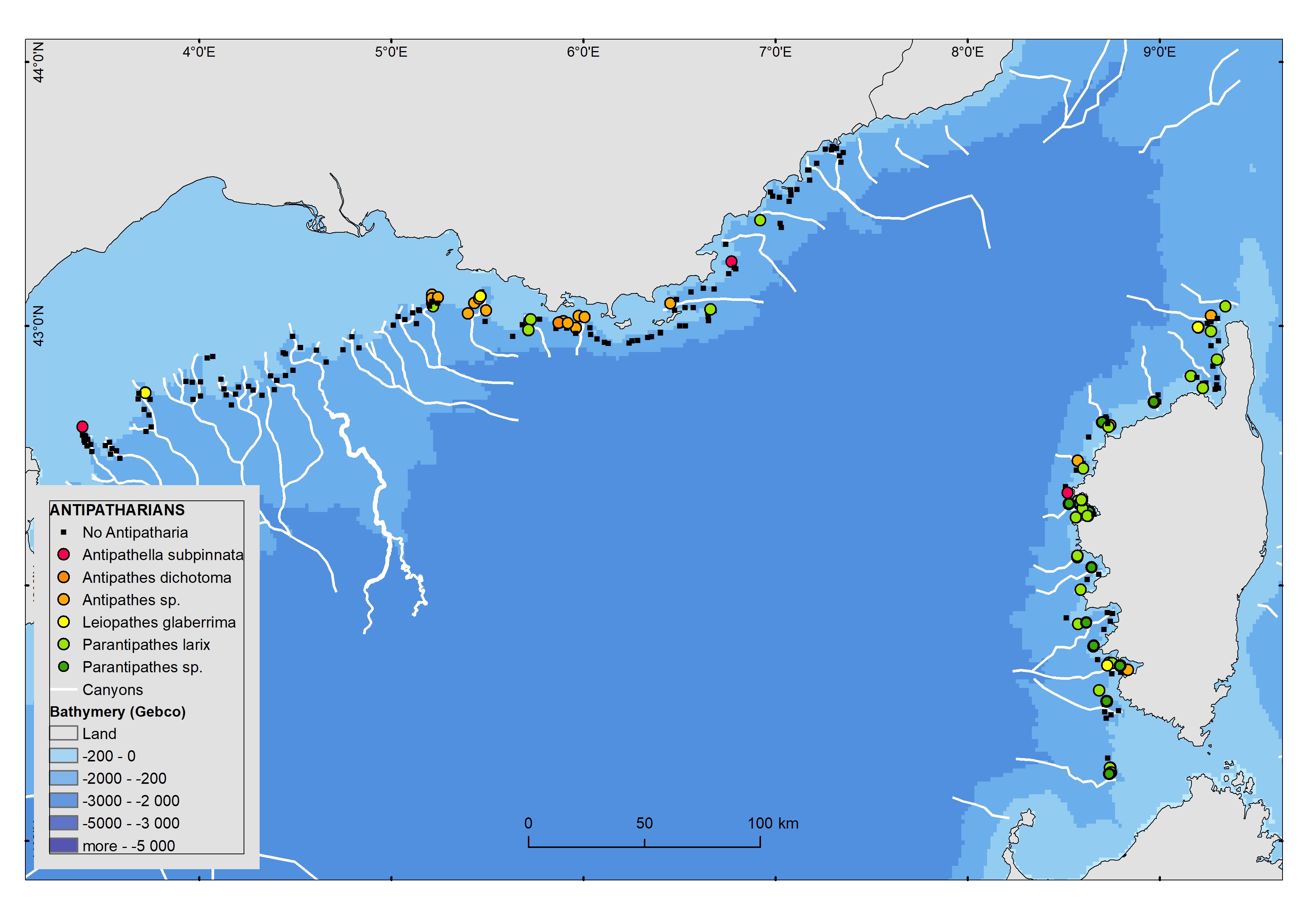
Data were extracted from videos recorded during MEDSEACAN_2009 and CORSEACAN_2010 cruises operated by Comex (Aamp funding). Underwater vehicles were either Achille ROV or Remora submersible. Video analyses were realized by Ifremer and GIS posidonie.
-
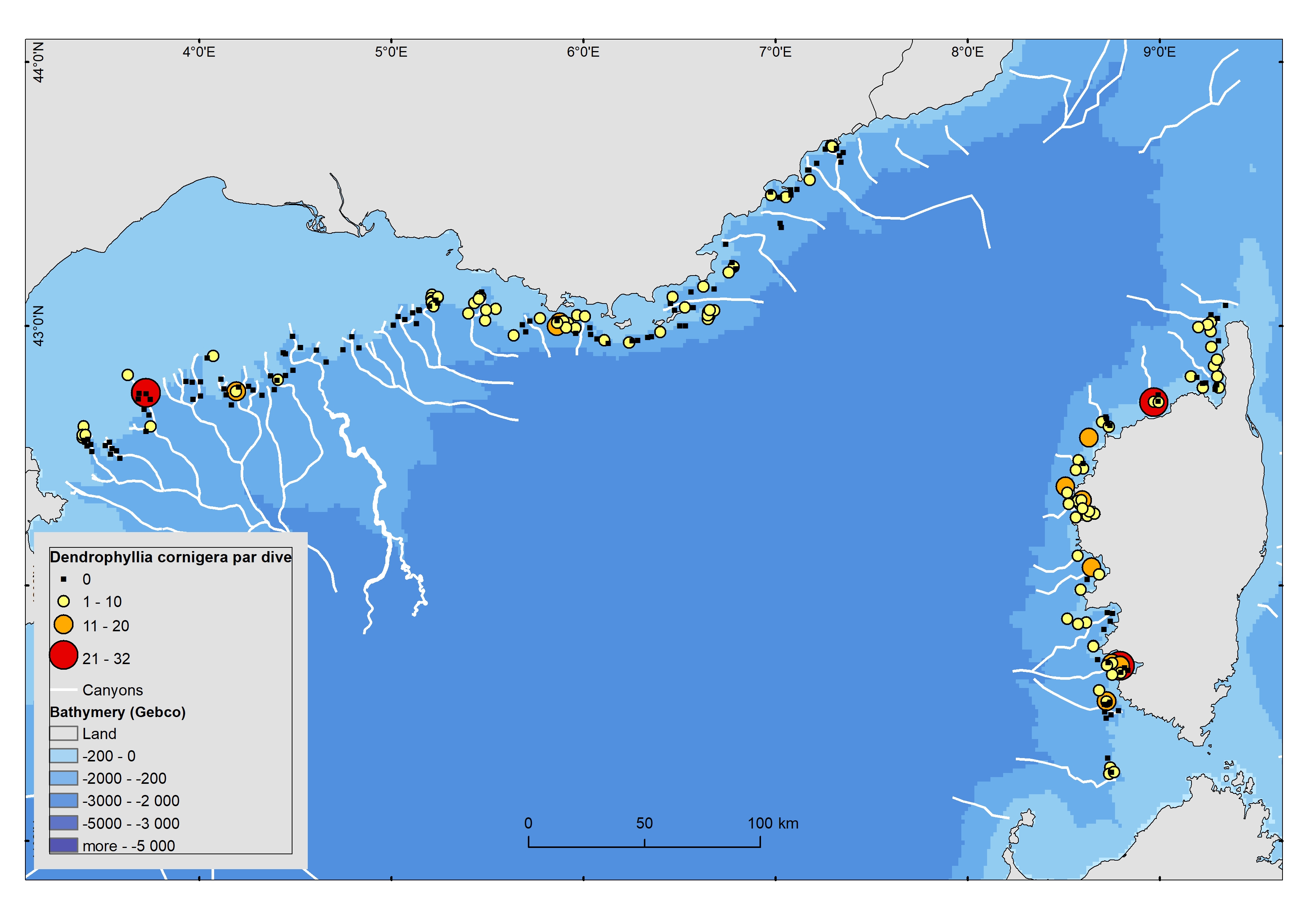
Data were extracted from videos recorded during MEDSEACAN_2009 and CORSEACAN_2010 cruises operated by Comex (Aamp funding). Underwater vehicles were either Achille ROV or Remora submersible. Video analyses were realized by Ifremer and GIS posidonie.
-
Distribution des gorgonaires Viminella flagellum observées pendant la campagne Videocor1 dans le canyon de Cassidaigne (L'Europe 2017, H-ROV Ariane). Données liées à la publication Fabri et al., 2019. https://doi.org/10.1016/j.pocean.2019.102172
-
Distribution des gorgonaires Callogorgia verticillata observées pendant la campagne VIDEOCOR_2017 dans le canyon de Cassidaigne (L'Europe 2017, H-ROV Ariane). Données liées à la publication Fabri et al., 2019. https://doi.org/10.1016/j.pocean.2019.102172
-
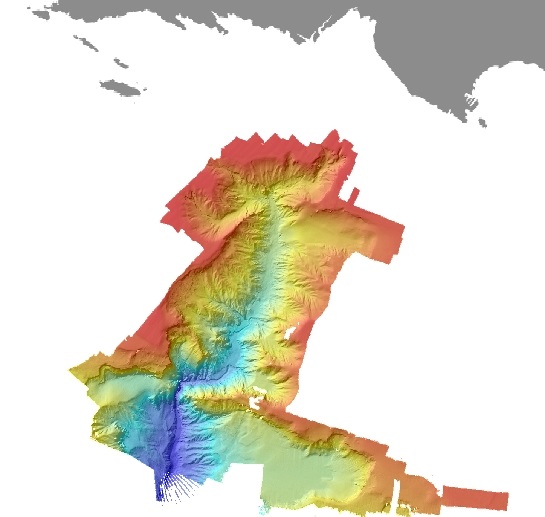
Bathymétrie du canyon de Cassidaigne (campagne ESSROV 2010, 2010). Les données ont été acquises par le sondeur multifaisceau Reson Seabat EM7150 du N/O Pourquoi Pas?, lors de la campagne ESSROV 2010. Ce Modèle Numérique de Terrain est disponible à deux résolutions différentes : 10 et 20 mètres (WGS84, projection Mercator latitude 42°N). Rapport de traitement : Breton Cécile (2012). Canyon de Cassidaigne. Traitement des données de la campagne ESSROV_2010. Référence bibliographique : Fabri, M.C., Bargain, A., Pairaud, I., Pedel, L., & Taupier-Letage, I. (2017) Cold-water coral ecosystems in Cassidaigne Canyon: An assessment of their environmental living conditions. Deep Sea Research Part II: Topical Studies in Oceanography, 137, 436-453. https://doi.org/10.1016/j.dsr2.2016.06.006 Description de la campagne : SIMEONI Patrick (2010) ESSROV 2010 cruise, RV Pourquoi pas ?, https://doi.org/10.17600/10030090
 Mon GéoSource
Mon GéoSource